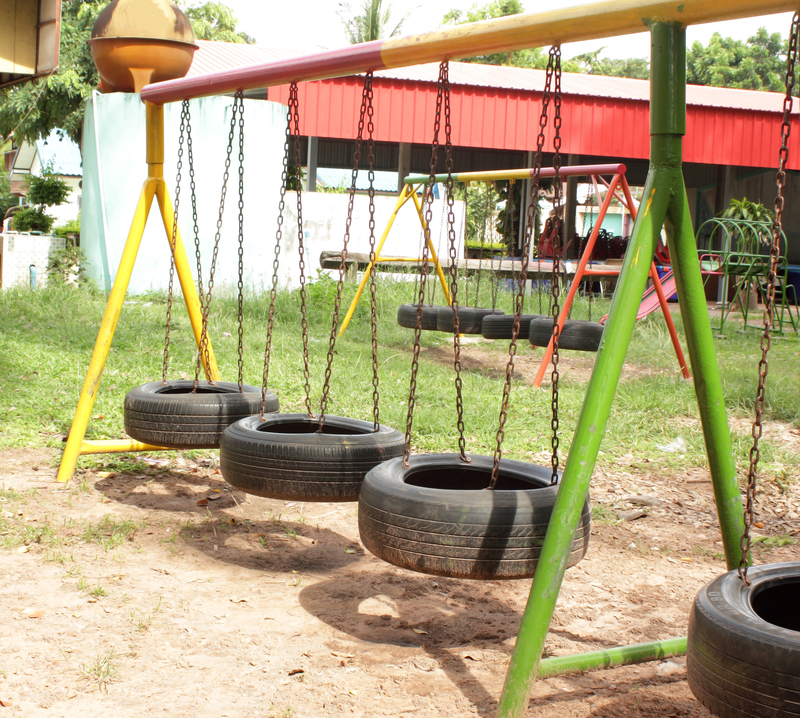Steps to Create Effective Workplace Recycling
Posted on 25/05/2025
In today's world, environmental consciousness is more important than ever, and many organizations are striving to implement sustainable practices. One key area where businesses can make a significant impact is through the establishment of effective workplace recycling programs. This article will provide a detailed, step-by-step guide on how to create a successful recycling initiative in your workplace.
Evaluate Existing Waste Management Practices
Before implementing a new recycling program, it's essential to understand the current waste management practices at your workplace. Conduct a waste audit to identify the types and amounts of waste generated. This can involve:
- Sorting and Categorizing Waste: Separate waste into categories such as paper, plastic, glass, metal, and organic waste.
- Measuring Waste Quantity: Track the amounts of each type of waste over a specified period to understand the volume and frequency of waste generation.
- Identifying Problem Areas: Determine which areas of your workplace generate the most waste and identify any specific materials that are particularly problematic.
A thorough evaluation provides a solid foundation for developing targeted recycling strategies.

Set Clear and Achievable Goals
Once you have a clear understanding of your current waste management practices, the next step is to establish goals for your recycling program. Consider setting both short-term and long-term goals. Examples include:
- Short-Term Goals: Reduce paper use by 25% within six months, introduce recycling bins in all common areas, or achieve a 50% recycling rate within the first year.
- Long-Term Goals: Aim for zero waste to landfill within five years or become a certified Green Office.
Make sure your goals are specific, measurable, attainable, relevant, and time-bound (SMART). Clear goals provide direction and enable you to measure progress effectively.
Engage Stakeholders
A successful recycling program requires the support and participation of all employees. To engage stakeholders, consider the following steps:
- Management Buy-In: Secure support from top management by presenting the benefits of recycling, such as cost savings, improved employee morale, and enhanced corporate image.
- Employee Involvement: Involve employees in the planning process to gather their input and foster a sense of ownership.
- Green Team: Establish a dedicated team or committee responsible for overseeing the recycling program and ensuring its continued success.
Frequent communication and transparent decision-making processes help build a culture of sustainability and encourage employee participation.
Develop a Comprehensive Recycling Plan
With clear goals and stakeholder support, you can now develop a comprehensive recycling plan. Key components of the plan should include:
- Material Identification: Clearly define which materials will be recycled and which will not.
- Recycling Bins: Determine the types and locations of recycling bins needed throughout the workplace. Use clearly labeled bins to differentiate between types of recyclable materials.
- Collection Schedules: Establish regular collection schedules, whether using in-house staff or external waste management services.
- Supplier Engagement: Work with suppliers to minimize packaging waste and explore options for using recycled materials.
A detailed plan helps ensure consistency and efficiency in the recycling process.
Implement and Promote the Recycling Program
After finalizing your recycling plan, it's time to implement it. Effective implementation includes:
- Training: Provide employees with training on what materials are recyclable, how to use recycling bins correctly, and why recycling is important.
- Signage: Utilize clear, informative signage to guide employees on recycling practices. Include visual aids and straightforward instructions.
- Communication: Regularly communicate progress and updates to keep employees informed and motivated. Use newsletters, emails, and meetings to share success stories and address any challenges.
Promotion is key to maintaining momentum and ensuring long-term commitment to the recycling program.
Monitor and Evaluate Progress
Ongoing monitoring and evaluation are critical for the continuous improvement of your recycling program. Establish metrics to measure success, such as:
- Recycling Rates: Track the percentage of waste being recycled versus overall waste generated.
- Waste Reduction: Monitor changes in the volume of waste produced over time.
- Employee Participation: Assess employee engagement through surveys and feedback mechanisms.
Regularly review these metrics and make adjustments to the program as needed. Celebrate milestones and recognize contributions to maintain enthusiasm.
Overcoming Challenges
Implementing a workplace recycling program is not without its challenges. Common obstacles include:
- Contamination: Ensure materials are clean and properly sorted to avoid contamination, which can render recyclables unusable.
- Employee Resistance: Address resistance by highlighting the benefits of recycling and providing ongoing education.
- Resource Allocation: Allocate sufficient resources, such as staff time and budget, to support the program's success.
By anticipating and addressing these challenges, you can ensure the longevity and effectiveness of your recycling efforts.

Expanding the Program
As your recycling program matures, consider expanding its scope. Opportunities for expansion include:
- E-Waste Recycling: Implement a program for recycling electronic waste, such as computers and phones.
- Composting: Introduce composting for organic waste, reducing the amount sent to landfills.
- Community Involvement: Extend your recycling efforts beyond the workplace by partnering with local organizations and community groups.
Expansion not only enhances your environmental impact but also demonstrates your organization's ongoing commitment to sustainability.
Conclusion
Creating an effective workplace recycling program is a multifaceted process that requires careful planning, stakeholder engagement, and ongoing monitoring. By following the steps outlined in this article--evaluating existing practices, setting clear goals, engaging stakeholders, developing a comprehensive plan, implementing and promoting the program, monitoring progress, overcoming challenges, and expanding the program--you can establish a successful recycling initiative that makes a significant positive impact on both the environment and your organization.
Investing in workplace recycling not only helps protect the planet but also fosters a culture of sustainability and responsibility, leading to a more motivated and engaged workforce. Start your recycling journey today and contribute to a greener future for all.

